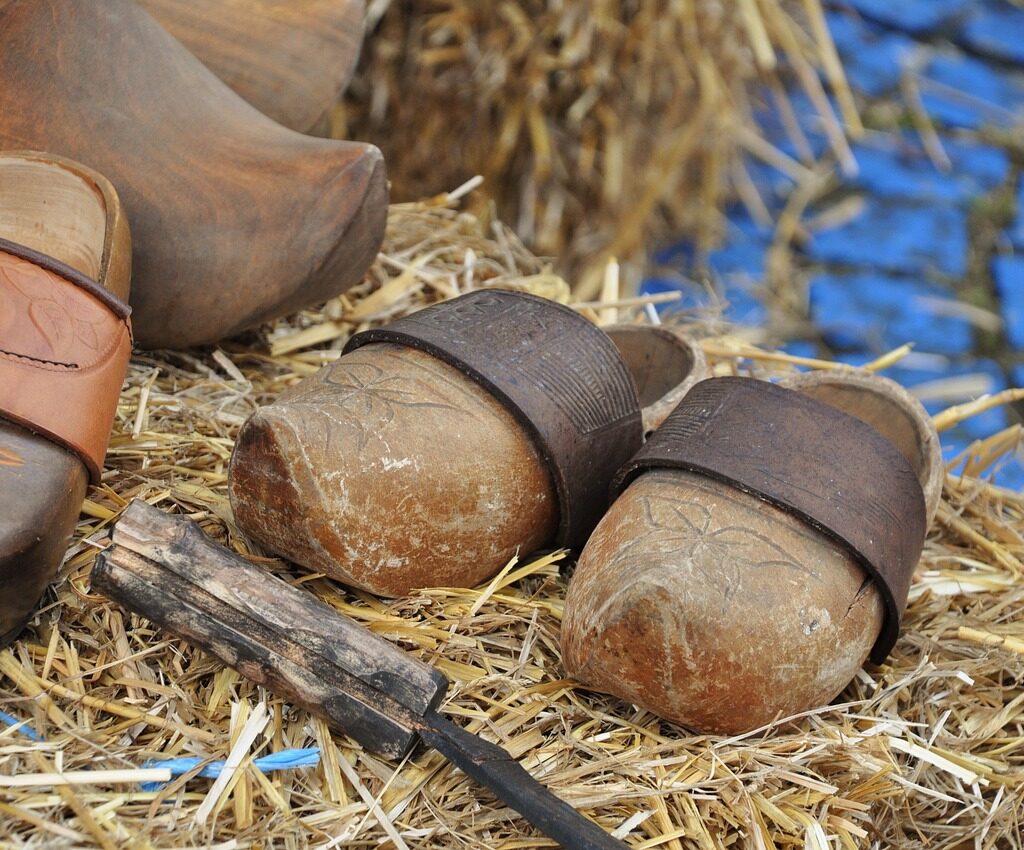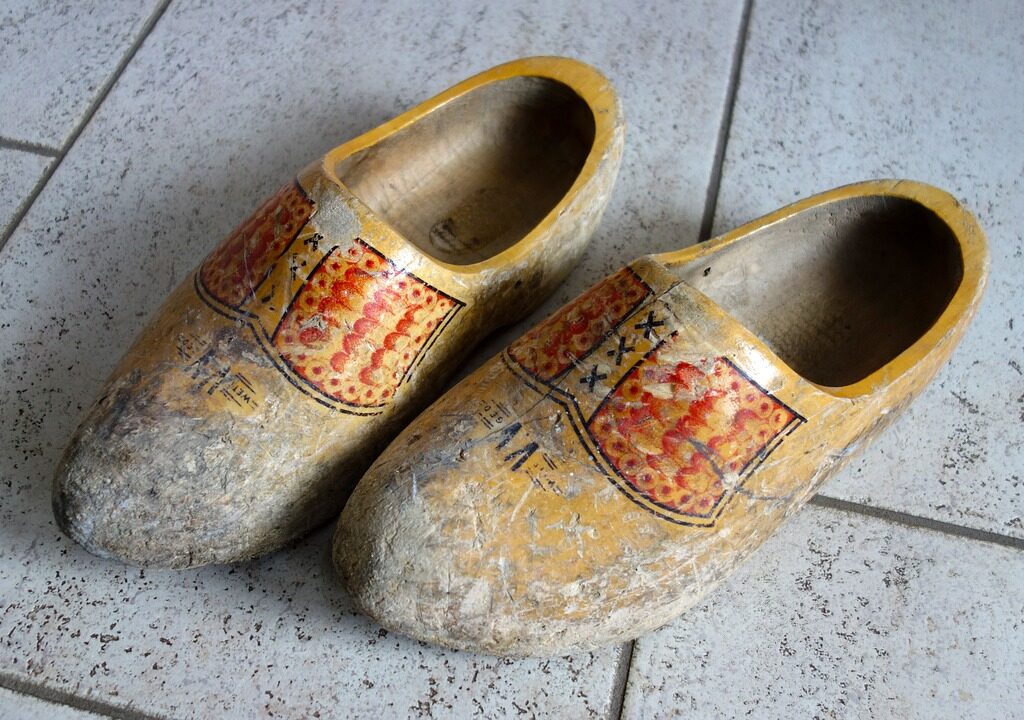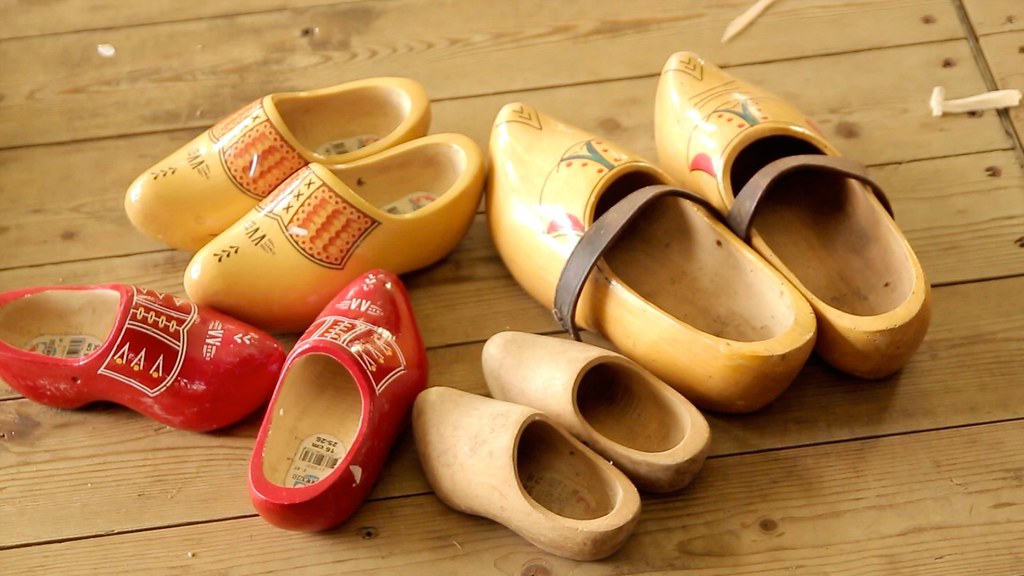Dutch clog shoes, also known as klompen, are more than just shoes; They are deeply rooted in Dutch culture and tradition. Their distinctive appearance and long history have established them as iconic symbols of the Netherlands.
Humble Beginnings:
Dutch clog shoes originated in the 12th century when people used readily available wood to make sturdy and practical shoes. The wet and muddy Dutch landscape made clogs ideal for farmers and workers who needed protection from the elements. The wooden construction provided waterproof protection and the raised sole kept feet dry and off the damp ground.

Beyond Functionality:
Over time, Dutch clog shoes transcended their practical purpose and became a cultural icon. The clogs were handmade with intricate designs and painted with vibrant colors reflecting regional styles and individual preferences. This transformation elevated them from work clothing to symbols of regional identity and artistic expression.
Enduring Legacy:
Even today, clogs shoe hold a special place in Dutch culture. Although they are no longer the primary choice of everyday shoes, they are still worn during special occasions and folk festivals. They are also popular souvenirs, reminding us of the country’s rich heritage and craftsmanship.
The Future of Klompen:
The future of clogs shoe are linked with the preservation of Dutch cultural identity.
Clog-making workshops continue to operate, passing on traditional techniques to
younger generations. Additionally, modern interpretations of clogs using different materials and contemporary designs are making their way among fashion-conscious individuals.
Dutch clog shoes, with their unique blend of practicality, artistry, and cultural significance, serve as an enduring testament to Dutch heritage and continue to captivate hearts around the world.

The Enduring Allure of Dutch Clog Shoes:
Beyond Dutch Borders:
The popularity of Dutch clog shoes stretches beyond the Netherlands. Similar wooden footwear has been discovered in many societies throughout history, with variants found in Europe, Asia, and North America. However, the Dutch clog’s iconic significance is unique.
Cultural Exchange and Tourism:
clogs shoe have become iconic symbols of the Netherlands, appearing in promotional materials and souvenir stores. Tourists gather to buy small replicas or wear them as part of a cultural experience. This connection with Dutch culture has significantly boosted the country’s tourism.
Symbolic Representation:
Dutch clog shoes can also represent various cultural aspects besides the Netherlands. They often symbolize rural life, simplicity, and resilience. Their sturdy builds and connections to working-class communities create a sense of authenticity and solidity.
Challenges and Adaptations:
Despite their lasting popularity, Dutch clog shoes face problems in the modern day. Production costs, competition from mass-produced footwear, and changing fashion trends all have influenced the sector. However, clog makers are adapting by delivering high-quality, handcrafted clogs and experimenting with new designs that cater to a wide range of tastes and preferences.
A Look Ahead:
The future of Dutch clog shoes promises continued growth. By embracing innovation while preserving traditional techniques, clog manufacturers can ensure that the legacy of these iconic shoes lives on. Whether practical shoes, cultural symbols, or artistic expressions, Dutch clog shoes are likely to remain a source of fascination and cultural pride for generations to come.

The Intricacies of Klompen: A Glimpse into Clog Making and Decoration
The Art of Clog Making:
Dutch clog shoes made from willow, poplar, or beech wood require a unique skill. Traditionally, clog makers (klompen makers) used hand tools such as axes, knives, and gouges to shape wood. Today, while some workshops still use these methods, others incorporate power tools to increase efficiency. Regardless of the technique, creating a well-fitting and comfortable clog requires expertise and dedication.
A Spectrum of Styles:
Dutch clog shoes boast a diverse range of styles and decorations. The most common types include:
- Klómpe: Traditional wooden dagger, often worn by farmers and working-class individuals.
- Klompjes: Small, lightweight clogs, usually worn by children.
- Bontklomp: Clogs decorated with colorful floral or geometric patterns, reflecting regional styles and personal preferences.
- Trippen: clogs with wooden heels, traditionally worn by women on special occasions.
Beyond Aesthetics:
The decorations on Dutch clog shoes weren’t just for show. In some regions, specific colors or patterns held symbolic meaning, signifying marital status, social standing, or religious beliefs. This intricate relationship between aesthetics and cultural significance adds another layer to the allure of Dutch clog shoes.
A Glimpse into the Future:
As technology advances and fashion trends evolve, the future of Dutch clog-making depends on adaptability and innovation. Clogs shoe manufacturers are experimenting with different materials like rubber and even incorporating modern design elements into their creations. These efforts aim to preserve the essence of Dutch clog shoes while appealing to contemporary tastes.
By embracing both tradition and innovation, Dutch clog manufacturers can ensure that these iconic symbols of Dutch culture continue to captivate audiences around the world for generations to come.

The Lasting Impact of Dutch Clog Shoes: A Legacy Beyond Footwear
More Than Just Shoes:
clogs shoe go beyond their function as shoes. They represent a tangible connection with the past, connecting people to the ingenuity, resilience, and artistic expression of Dutch culture. They act as cultural ambassadors, promoting understanding and appreciation for Dutch heritage on a global level.
Preserving a Cultural Treasure:
The future of Dutch clog shoes is not just about the shoes, but also about the preservation of related cultural practices and traditions. This includes supporting clog-making workshops and educational initiatives that teach younger generations the history and skills behind this unique craft.
A Symbol of Sustainability:
In the age of fast fashion and mass production, Dutch clog shoes offer a refreshing alternative. Their durability and repairability contrast with the “disposable” nature of many modern footwear options. This aspect, combined with the use of natural, renewable materials, makes Dutch clog shoes a more sustainable shoe choice.
Source of Inspiration:
The story of Dutch clog shoes serves as an inspiration for other cultural traditions dealing with the difficulties of globalization and modernization. It highlights how important it is to change
while being true to one’s roots and protecting cultural legacy for the future generations.
Dutch clog shoes are more than just wooden shoes; they are cultural symbols that capture the essence of the Netherlands. Their evolution from the practical necessity to a worldwide emblem demonstrates their continuing importance and the power of tradition. Dutch clog shoes are likely
to evolve in the future, reminding us of the value of cultural preservation, ecological techniques, and the timeless attraction of well-crafted, meaningful products.
FAQ:
- What are clogs shoes?
Ans: Clogs shoes are traditional wooden footwear, often associated with Dutch culture. They are crafted from a single block of wood and are known for their durability and distinctive design. - Are Dutch clogs still worn for everyday use in the Netherlands?
Ans: While Dutch clogs were once a common sight in rural areas for everyday wear, their usage has declined in modern times. However, they are still worn on special occasions and are highly regarded as symbols of Dutch heritage. - What types of wood are used to make Dutch clogs?
Ans: Traditional Dutch clogs are often crafted from willow, poplar, or birch wood, known for their durability and flexibility. - Are Dutch clogs comfortable to wear?
Ans: While Dutch clogs may feel rigid at first, they are designed to mold to the wearer’s foot over time, providing comfort and support for extended wear. - Can modern Dutch clogs be worn in different weather conditions?
Ans: Yes, modern Dutch clogs are often designed with weather-resistant materials such as rubber or leather, making them suitable for a variety of weather conditions. - Are Dutch clogs considered a fashion statement?
Ans: While traditional Dutch clogs are deeply rooted in tradition, modern variations have evolved to incorporate fashion-forward designs, appealing to individuals seeking both style and functionality.

